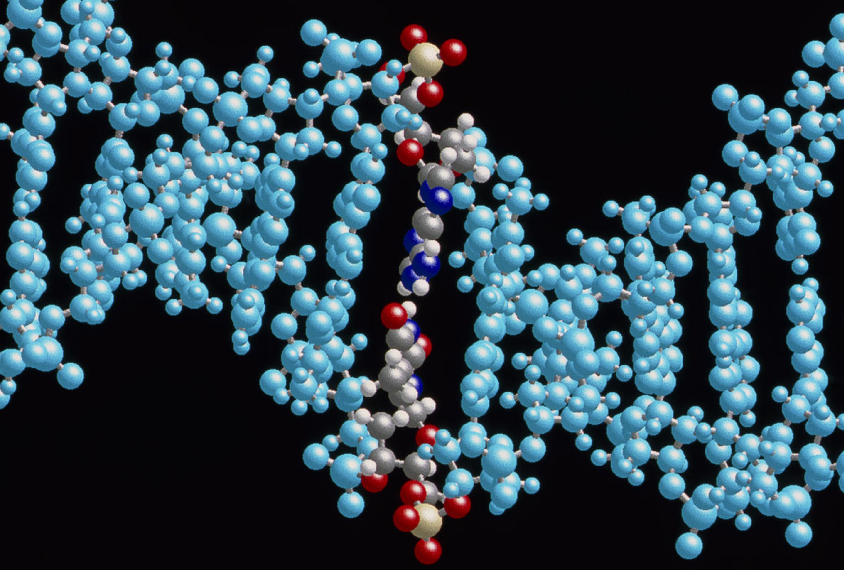
Alfred Pasieka / Science Photo Library
THIS ARTICLE IS MORE THAN FIVE YEARS OLD
This article is more than five years old. Autism research — and science in general — is constantly evolving, so older articles may contain information or theories that have been reevaluated since their original publication date.
Two new methods allow scientists to swap single bases in DNA or RNA sequences. The methods could reveal the effects of single-letter mutations seen in people with autism.
There are four DNA bases, or nucleotides: adenine (A), thymine (T), guanine (G) and cytosine (C). RNA has uracil (U) instead of T.
Researchers can edit genomes using the enzyme CAS9 to snip double-stranded DNA at specific locations in the genome. The cell’s repair machinery tries to mend the break by inserting or deleting nucleotides. Scientists then analyze the cells to find the ones with the mutation they want.
A different approach, called base editing, directly swaps one pair of DNA bases for another without breaking the double strand. But existing systems can only convert a C-G pair to an T-A, not vice versa.
In a new study, researchers developed a base editor that can switch an T-A to a C-G1. They started with an enzyme called deaminase, found in the bacterium Escherichia coli. The enzyme ordinarily works on RNA and can convert A to inosine (I), which functions similarly to guanine.
They fused the deaminase to a modified version of CAS9 that opens up the DNA strand without breaking it, giving the deaminase access. They then made various mutations in the deaminase, with the idea that one of the mutations might give the enzyme the ability to swap bases in DNA.
They also mutated the gene for antibiotic resistance in E. coli. Bacteria with this mutation die when exposed to an antibiotic unless they manage to undo the mutation by swapping a specific A for an I.
Letter swap:
The team delivered deaminase-CAS9 fusions into millions of E. coli cells and then dosed the bacteria with an antibiotic. The few hundred colonies that survived contained enzyme fusions that had successfully swapped the A in the antibiotic resistance gene for an I.
The researchers repeated this challenge seven times with the enzyme fusions that worked. Each time, they added new mutations and selected for fusions that work quickly and reliably by increasing the concentration of the antibiotic. They ultimately isolated an editor that could swap A for I at many locations in the genome, with few errors.
The base editor was able to correct a mutation that causes haemochromatosis, a condition marked by excess iron in the blood. Researchers described the tool 25 October in Nature.
A second tool allows scientists to swap single RNA letters in human cells2. This one involves a similar deaminase and the enzyme CAS13, which can cleave RNA.
They used the tool to correct two single-letter mutations in which a G had been converted to an A in human cells. One mutation causes diabetes; the other leads to anemia. The new base editor corrected the mutations 35 and 23 percent of the time, respectively.
Because RNA editing doesn’t change the DNA sequence, the base editor’s effects are transient. Scientists might use this approach to treat conditions resulting from temporary changes in cells, such as those caused by inflammation, the researchers say. They described their tool 25 October in Science.
By joining the discussion, you agree to our privacy policy.